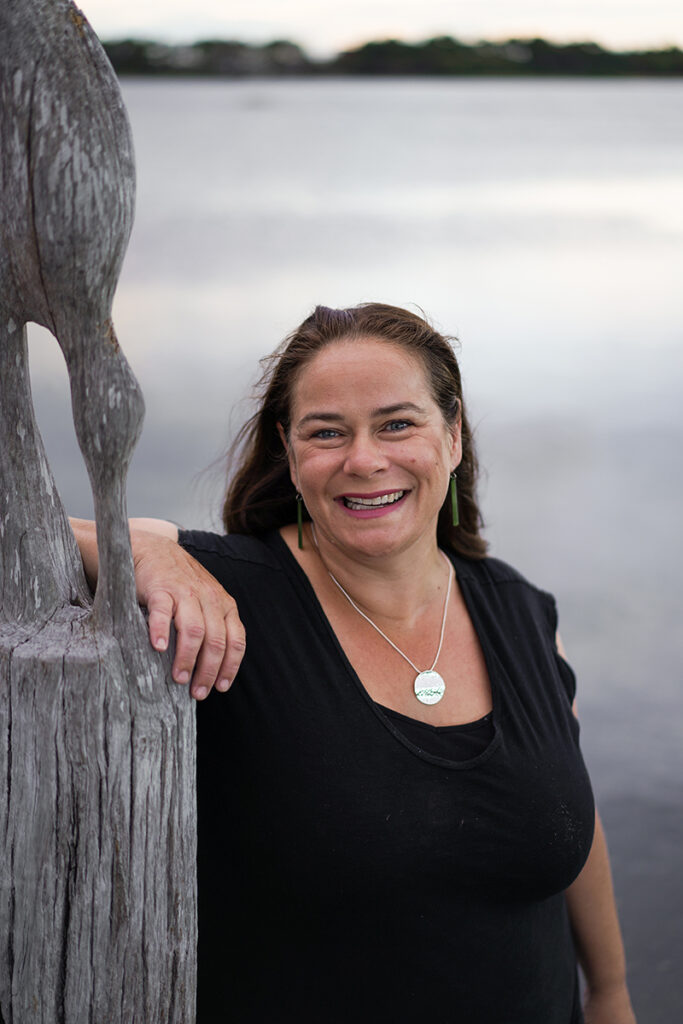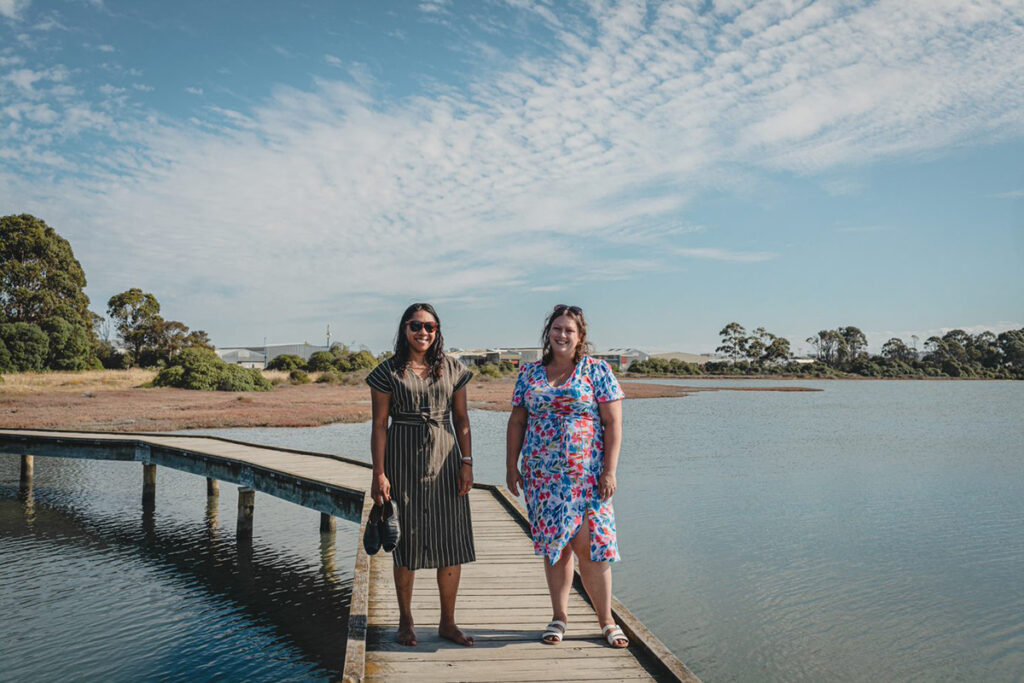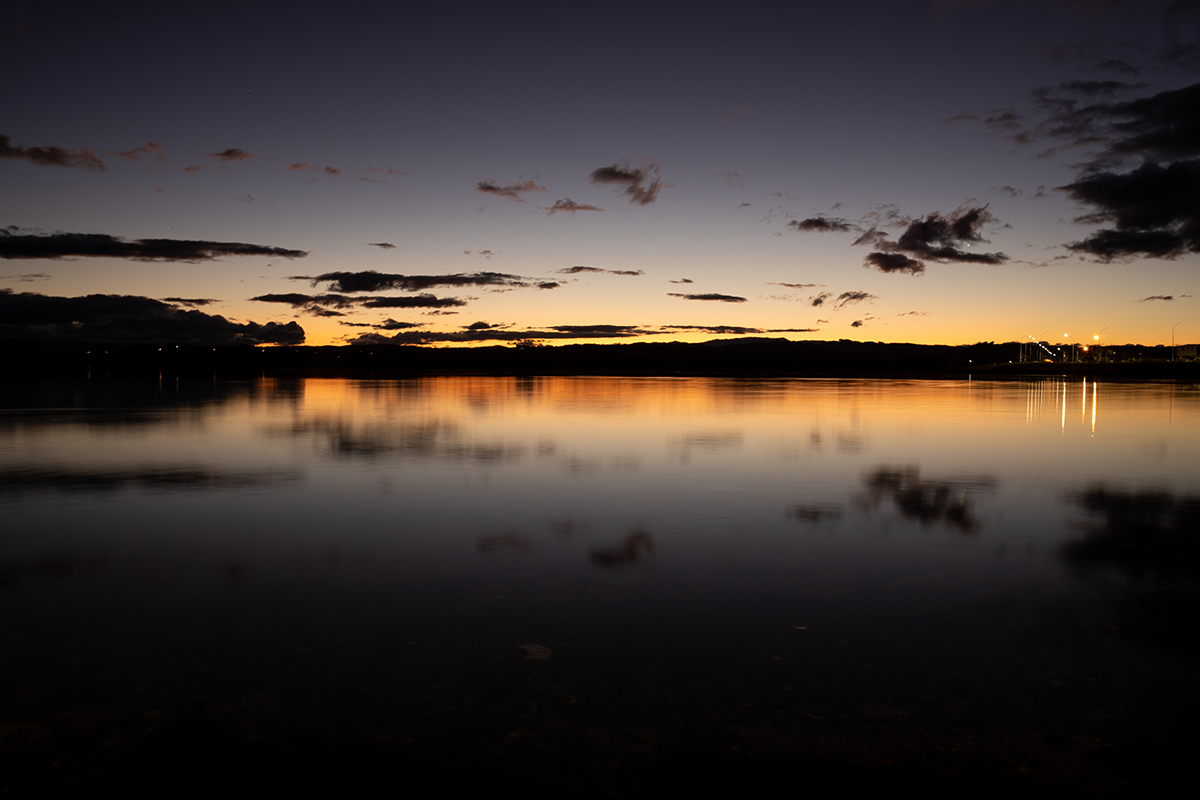For as long as humans have inhabited the place we now call Napier, this body of water has been a source of food, transport and recreation.
Generations have caught fish from its waters, picked shellfish from its sands, swum in it on hot summer days, cycled and walked around it, watched wildlife and learned to paddle or sail on it.
But recent times have seen aspects of the estuary deteriorate rapidly and severely.
Storms overwhelming the city’s ageing pipe infrastructure have seen sewerage mixing with the stormwater released into the waterway. Chemical spills from nearby industry have repeatedly contaminated parts of the wetlands, too. Health warnings and notices advising people not to swim or collect food from Ahuriri Estuary have become all too common sights. Hardly an encouraging sign for a place that has long been one of the city’s natural gems.
In 2018 Napier City Council published their Ahuriri Estuary and Coastal Edge Masterplan.
Its Executive Summary includes a quote from Councillor Api Tapine: “What if the health of the estuary were a measure of our community values?” echoing the thoughts of Piri Prentice from Mana Ahuriri: “Ko te tohu rangitira ko te manaaki tāngata” (“measure achievement by how well we care for people”).
If care for the estuary is an indicator of Napier’s community values then there isn’t much to be proud of. It’s now at a ‘tipping point’.
Pandora’s bedpan?
In recent years the volume and nature of what dumps into the Ahuriri Estuary has become more and more of an issue.
February this year saw 1,000 litres of hydrochloric acid spilled by an Ahuriri industrial area business into the stormwater system that flows into the waterway. Napier City Council (NCC) removed 40,000 litres of contaminated water, but health warnings stayed in place for the estuary for some time, and it wasn’t the first time no-swim notices have been posted around the pond.
‘One in 150 year’ weather events seem to happen almost every 12 months now. Stormwater run-off from Napier’s streets regularly overwhelms the city’s ageing infrastructure and mixes with wastewater during these deluges, ultimately ending up in Ahuriri estuary and causing it to be closed off to public use and food gathering as a health hazard.
In April 2017 the tail ends of Cyclones Debbie and Cook successively hit Hawke’s Bay hard and the Council discharged 2.5 million litres of wastewater into Pandora Estuary.
Similar conditions saw further releases in September 2018, when NCC issued a notification for residents to refrain from taking baths or flushing toilets for 36 hours. Most recently, on 9 November 2020, a phenomenal amount of rain over a few hours caused extensive flooding in the suburb of Marewa and slips on Napier Hill, and even more outflow into the Ahuriri Estuary. The flooding and damage would doubtlessly have been far worse had plugs not been pulled and floodgates opened.
What once was a reasonably small city now sprawls over a far wider footprint, with infrastructure demands far outstripping existing un-future-proofed supply.
It’s not just urban run-off causing the estuary health issues, either.
Anna Madarasz-Smith, team leader marine & coast at the Hawke’s Bay Regional Council (HBRC) says, “In terms of the most significant issues faced by the Ahuriri, from a science perspective it comes down to too many nutrients and too much sediment entering the estuary. Additionally, contaminants entering the estuary via stormwater can cause problems for the animals and plants living there.
“These issues appear to be fairly well spread around the catchment so there is no one area, industry or land-use that can be targeted for improvements. Rather, a variety of projects and efforts are underway to try and improve the health of the estuary.”
She cites as examples work that is currently underway by landowners working with HBRC to plant 44,148 native plants (another 17,400 to go in this year), 1,190 poles planted to reduce soil loss, and 16.5km of waterways fenced to reduce stock access and reduce bacteria and nutrient runoff.
“Additionally Napier City Council have been working very actively with industries bordering the estuary to manage stormwater contamination, as well as an extensive monitoring programme in conjunction with HBRC to detail the water quality in Napier’s urban waterways,” she says.
For local iwi and hapū this pollution desecrates the centuries-old gathering area for their kaimoana (seafood).

“The biggest issue for Te Komiti Muriwai and Mana Ahuriri Trust is the current consents for discharge to the estuary,” says trust representative Joinella Maihi-Carroll. “It has been these activities that have contributed to the pollution of this much prized taonga for Ahuriri Hapū.”
As for the future, she calls for the phasing out of discharge consents to the Estuary and no new consents, finding alternative solutions to deal with discharge and holding local authorities accountable for beginning the process of restoring the mauri for this prized taonga.
Angie Denby of the Ahuriri Estuary Protection Society says, “To us, pollution is where the priority lies, before we reach tipping point, and the estuary becomes life-less.”
Both Mana Ahuriri and the Ahuriri Estuary Protection Society believe councils need to take more responsibility for preventing and prosecuting the pollution of Ahuriri Estuary.
“Currently all consents for discharge directly into the estuary are administered by HBRC under the Resource Management Act. Some of those discharges have NCC only, and others have NCC and HBRC as joint consent holders. There are a number of other private discharges consented by HBRC into the estuary. NCC consents discharges into our network of drains only and through our stormwater bylaw,” says NCC deputy mayor Annette Brosnan.
“HBRC have powers to prosecute illegal discharges under the RMA. NCC only has powers to prosecute for breaches of their bylaws.”
Reduce, reuse, revitalise
“Currently and historically, 75% of Napier’s stormwater is pumped untreated into Ahuriri Estuary through various outfalls,” says Councillor Brosnan.

“Not only have hearts and minds moved on what is appropriate for that space, but the quality of our stormwater is decreasing, so we have issues from that which we want to solve through a wetlands treatment system.”
That plan envisions moving all Napier residential and industrial stormwater that’s currently going straight into the estuary into a series of treatment wetlands that will be situated on Napier’s Lagoon Farm. A series of natural pools and ponds with appropriate plantings and environments would assist with naturally ‘polishing’ and filtering the stormwater, settling the water and removing different types of contaminants– heavy metals, sediments and so on.
Lagoon Farm is 184 hectares of land on the airport side of Prebensen Drive, between Tamatea/Parklands and the estuary. With a lot of Napier’s expansion heading westward it makes sense to have it there between suburbia and the sea and the flora will ideally act as a natural filtration system.
This natural wetland filtration concept is part of the NCC’s new 10-year plan.
Also endorsed in recent LTP consultation is the Ahuriri Regional Park concept, with the proposed capital funding from HBRC to kick in around year four, and NCC funding to come in year seven. Operational funding for designing the master plan, consultation and so on will begin in year one, with work on the ground ideally starting in year four. More on the Park concept below.
Big Brother stepping in?
As BayBuzz has been reporting, the Government is expected to take over the running of ‘Three Waters’ – wastewater, stormwater, drinking water – which local councils have been administering until now.
Last July Local Government Minister Nanaia Mahuta announced a full review of the country’s deteriorating water infrastructure situation – Napier and Wellington have particularly been in the news in recent years for water woes.
The situation is undeniable – water systems neglected for decades by local councils are leaky, collapsing, unfit to meet rising need and plainly dangerous to our health … as we know well locally, deaths have occurred.
And now, the latest report given to Government is that it will cost up to an estimated $185 billion nationwide to fix the problem (revised from ‘only’ $46 billion estimated six months ago).
Although Wairoa mayor Craig Little lashed out at the move, claiming it was “The end of local democracy as we know it” in Hawke’s Bay Today, NCC is a bit more pragmatic about the potential change.
“We don’t know the answer to that because the Government has yet to answer some key questions around asset management, delivery models, staffing, revenue. Other than a signal that they want to centralise those ‘Three Waters’, we have had no details,” says Councillor Brosnan.
“NCC has prepared their 10-year plan under the assumption that we are still delivering the service at the end of that ten years. I don’t think there was any way we could have planned, forecast, or budgeted for anything other than that.
“We’re hopeful that by putting in aspirational plans like the regional park to deal with our issues that whatever entity comes about to take that over will be required to carry on with the programmes of work that we have budgeted and planned for. We’re trying to put Napier in its best position to have those projects delivered, even if it’s under a different entity.”

Ahuriri Regional Park
Making local headlines recently has been the joint initiative proposed by HBRC and NCC to create an ‘Ahuriri Regional Park’ focused around and beyond the estuary.
The park will be ‘owned’ by NCC (most of it will be on the former Harbour Board’s Lagoon Farm land) and managed by HBRC.
According to the HBRC consultation material, the intention is to “Kick-start improvements to the environment in partnership with Napier City Council for recreation, to manage stormwater and improve Ahuriri Estuary”.
The water quality and health of the estuary appear to be its main focus. Making it a ‘Regional Park’ adds an extra layer of protection and community involvement into the project – “the health of the estuary becoming a measure of our community values” to paraphrase NCC Councillor Api Tapine.
HBRC Councillor Hinewai Ormsby strongly supports the plan.
“I see restoring the mauri or life-force of the Ahuriri Estuary as a two-pronged attack – people and policy. Policy whereby we as a Hawke’s Bay community apply sustained effort to bringing it back to life. The people’s side requires us to take both an individual and collective responsibility for the Ahuriri Estuary where we have a massive opportunity to be the generation that restores and protects the estuary for the future generations to come.
“As a Regional Council we need to partner with others to bring the required change. In the middle of last year Napier deputy mayor Annette Brosnan and I talked about how our respective councils could collaborate around water quality issues in the Ahuriri Estuary. From her perspective Napier City has stormwater quality issues, and from the Regional Council we’re concerned about biodiversity and an estuary filling in with sediment.
“So we decided to work hard together on the concept of a Regional Park that will filter urban stormwater naturally using natural wetlands that provide habitat for native fauna and flora. This will provide a win-win for all these concerns. This year both our councils have committed funding in their Long Term Plans to building this Regional Park over the next 10 years.”
In June the Ahuriri Regional Park received funding of $12.5 million in NCC’s new Long Term Plan. NCC also have further funding of $2.3 million for ‘polishing wetlands’ and $18.8 million for stormwater channelling into Lagoon Farm. HBRC have assigned $10 million in their LTP.
Caution is still required in creating a regional park around the Ahuriri Estuary, however, warns Angie Denby of the Ahuriri Estuary Protection Society.
“By definition, a regional park appears to be about people and recreation. We believe the Upper Estuary as a whole should be managed 100% for wildlife values, and there should be no additional access for the public. This area should not be paved or manicured for cyclists, dog walkers or tourist groups.
“Here is why: The Upper Estuary is a sensitive wildlife habitat. One species in this area is the critically-endangered Australasian Bittern, a shy bird that requires undisturbed, quiet habitat. Local conservationists and wildlife experts have been restoring and protecting habitat there in recent years, and it is one of the few places in New Zealand where the numbers of these birds are increasing. Any development enabling easy access into this area would have a negative impact on these birds.
“Southern Marsh, next to the channel, is a specialised non-tidal habitat. A range of waders and crakes spend time there, like royal spoonbills and Marsh and Spotless crakes, and rarer species of sandpiper do visit. These places need conservation, not recreation.”
The term “tipping point” is used often in relation to Ahuriri Estuary’s current state. It does indeed appear to be very close to, if not completely on the edge. These next steps will define which way that balance tips. Do too little and pollution and sediment kills off the estuary’s natural flora and fauna. Do too much with conflicting objectives and you potentially further disrupt endangered or migratory species.
“The reality is that none of these things will be the silver bullet to heal the Ahuriri Estuary in isolation,” says Councillor Ormsby. But she voices optimism, concluding: “However, when the efforts and aspirations of the people on the ground are combined with policy that heals rather than harms, the future for the Ahuriri Estuary is extremely bright.”


Whilst I applaud the intent, the one question no-one addresses in this article is the impending effect of sea level rise… and how any work undertaken might marry / cope with that. The cynic in me (what, moi?) suggests that about the time the Park would be ready, the whole area will be part of the sea. Or very soon thereafter.